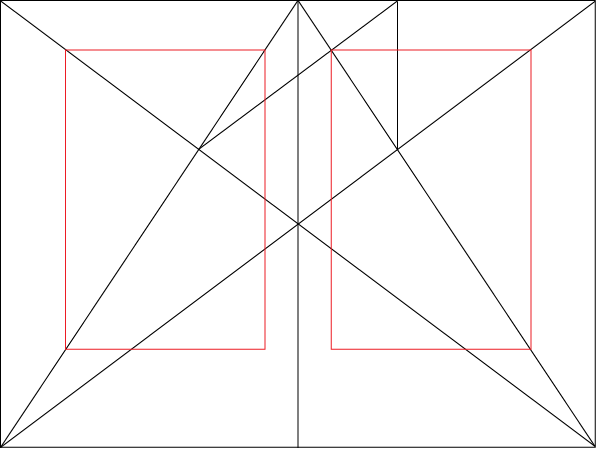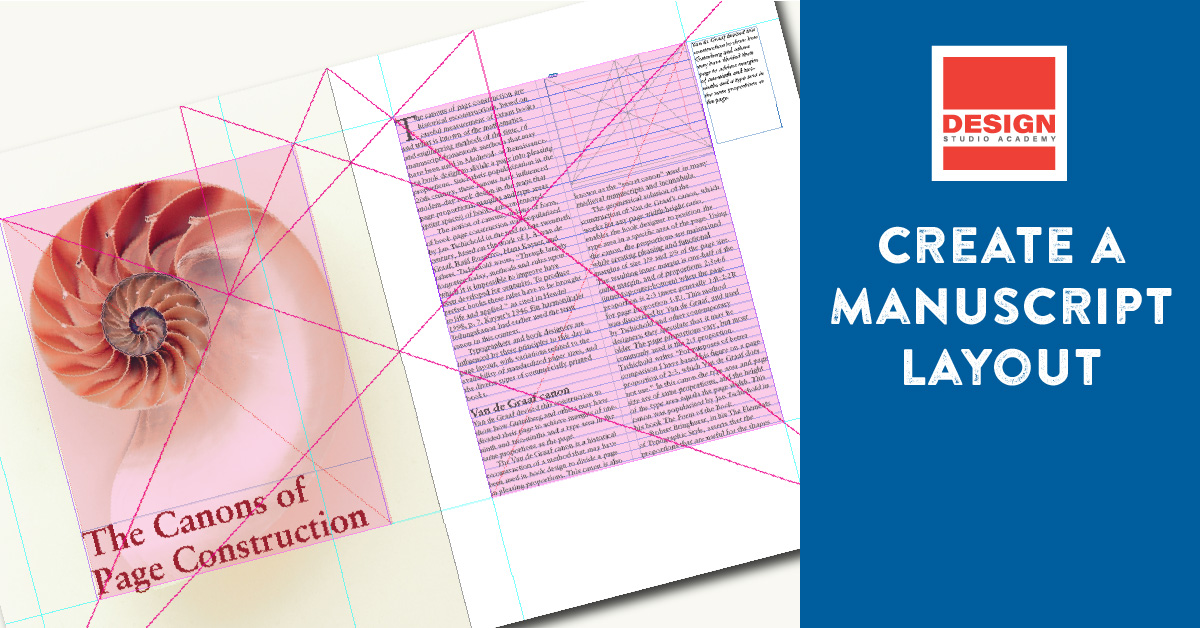As a designer, grids and guides are among the most essential tools in your arsenal when creating a book or manuscript layout. These tools help you to create clean, organized, and visually appealing documents. One of the most popular and widely used grids is The Van de Graaf Canon, which Swiss/German designer Jan Tschichold popularized in the twentieth century. This blog post will explore the benefits of using grids and guides and how to use The Van de Graaf canon to improve your design.
Background Knowledge
Grids and guides are essential for creating visually appealing documents. They help you create a clear and organized layout that is easy to read and understand. Using a grid, you can ensure that your design is balanced and harmonious, with consistent spacing and alignment. Guides help you precisely position your elements, avoiding overlapping or misalignment issues.

The Van de Graaf Canon
The Van de Graaf canon is a grid system based on the page’s proportions. This grid is based on the idea that the ideal page ratio is 2:3 and that the margins should be one-third of the page width. The grid is named after J. A. van de Graaf. Swiss/German designer and typographer Jan Tschichold popularized the canon.
To use the Van de Graaf canon, you start by dividing your page into nine equal parts, with two vertical and two horizontal lines. The intersection of these lines creates four points, which are the key points of the grid. The top and bottom margins should be one-third of the height of the page, while the inside and outside margins should be one-third of the width of the page.
Using The Van de Graaf Canon in Your Design
Using The Van de Graaf canon in your design can help to create a balanced and harmonious layout. By aligning your elements to the grid, you can create a clear information hierarchy and guide the reader’s eye through the document. You can use the grid to position your text, images, and other design elements, ensuring they are aligned and spaced consistently.
In addition to using The Van de Graaf Canon, you can also use other grids and guides to improve your design. For example, you can use a baseline grid to align your text and create a consistent vertical rhythm. You can also use a modular grid to create a flexible and adaptable layout, which can be used for different types of content.
Conclusion
Using grids and guides is essential for creating visually appealing and easy-to-read documents. The Van de Graaf canon is a popular and widely used grid system that can help you create a balanced and harmonious layout. This grid ensures that your design is consistent and organized, with clear hierarchy and spacing. So, consider using The Van de Graaf Canon to improve your layout next time you design a document.
Create a Manuscript Layout Project
In this Adobe InDesign tutorial video, you’ll learn how to use grids and guides to lay out your manuscript. We’ll explore the benefits of using grids, dive into the Van de Graaf Canon, and cover how to set up your document, create a baseline grid, use appropriate type settings, and export your final layout as a PDF. By the end of this tutorial, you’ll know how to use Adobe InDesign and the Van de Graaf Canon to create a visually appealing and easy-to-read layout for your book, magazine, or any other document type.
Learning Targets
- I can construct pages using proportions based on the paper’s size.
- I can set the appropriate type settings (font size, indents, leading, etc.) for an article.
- I can use a baseline grid and type settings to align text columns.
- I can use Picas and Points for measurement.
- I can export spreads from InDesign in PDF format.
Download Project Materials
All of the project materials are available in the zip file. You can also download them individually using the links below.
References
Grammarly. (2023). Grammarly (Nov 15 version) [Large language model]. https://app.grammarly.com/
Prompts:
“Write a blog post about using grids and guides for designing documents, including using The Van de Graaf canon.”
Wikimedia Foundation. (2023, January 13). Jan Tschichold. Wikipedia. https://en.wikipedia.org/wiki/Jan_Tschichold
Wikimedia Foundation. (2023, September 29). Canons of page construction. Wikipedia. https://en.wikipedia.org/wiki/Canons_of_page_construction



